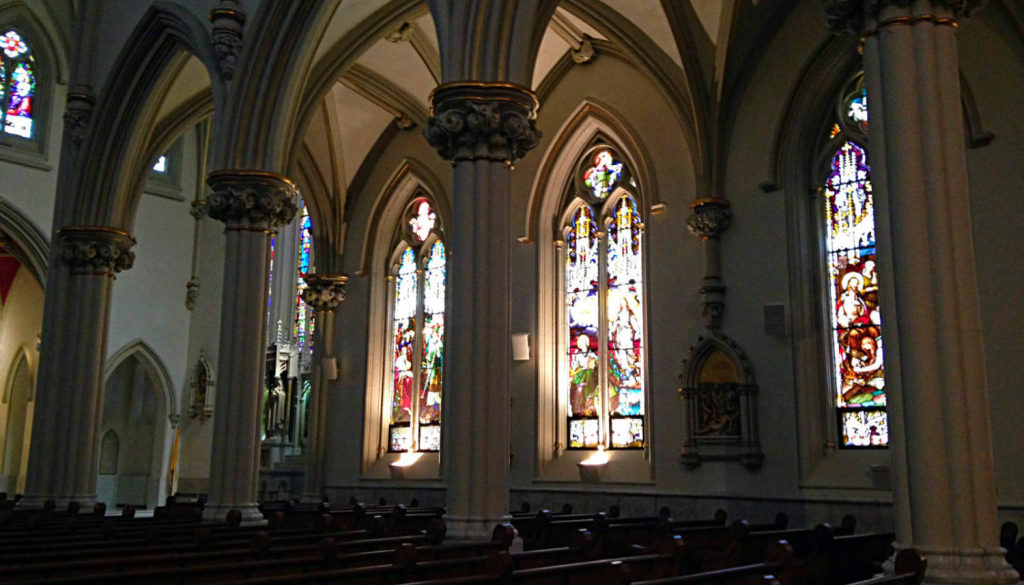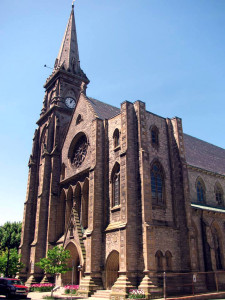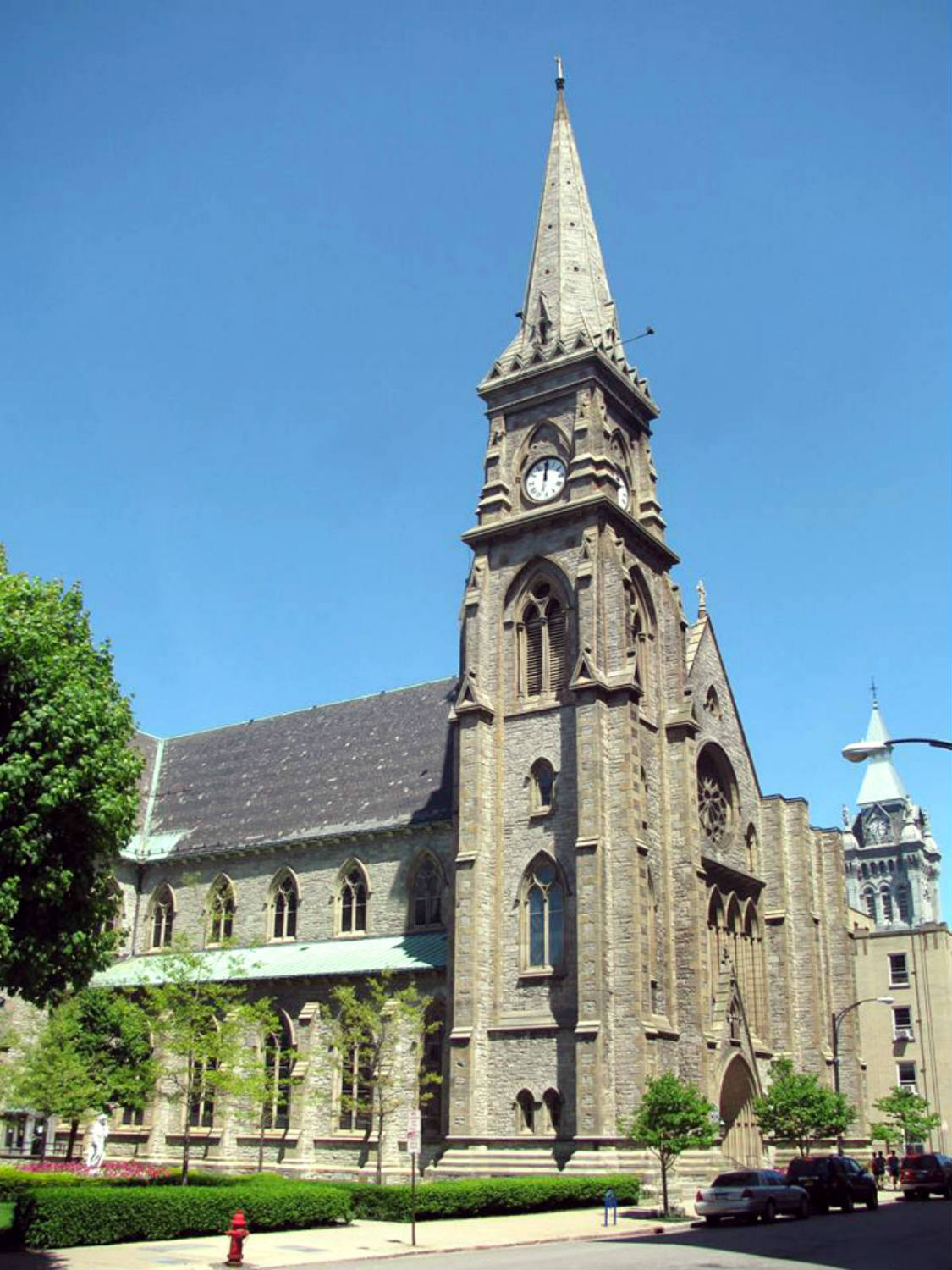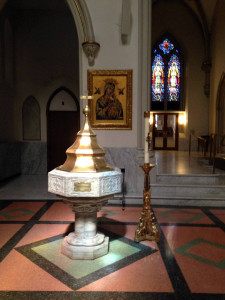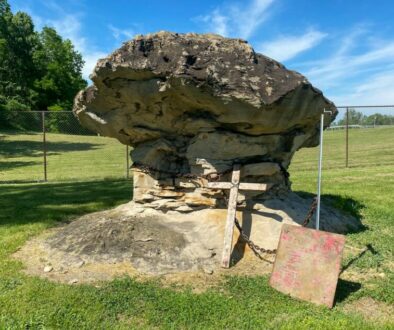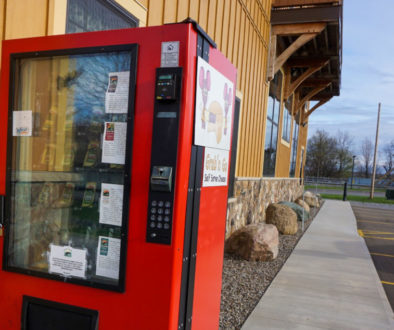The Glory of St. Joseph Cathedral – Buffalo, NY
Touring inside St. Joseph Cathedral during an Explore Buffalo tour.
by Chris Clemens
I recently took Explore Buffalo’s ‘Masters of American Architecture’ walking tour in downtown Buffalo. The walking tour is an awesome opportunity to explore some of the city’s best architectural gems up close. For $10.00 and a couple hours of walking, this tour is a great opportunity. Attendees are led around the downtown area to hear about architectural design features in Buffalo.
Though I was looking forward to the whole tour, I was really excited about two spots in particular. One of the reasons I wanted to join the tour was to be able to peek inside St. Joseph Cathedral.
Admittedly, I’m not always perfectly patient on guided tours with a group of people. But, I’d say I did pretty good staying on track with not wandering off….too much.
Catholic Beginnings In Buffalo
Even in the early decades of the 19th century, the City of Buffalo was becoming a bustling metropolis. In response, the Catholic diocese of NY decided that Western NY could use its own diocese. In response the population growth in the city, m they created the Diocese of Buffalo in 1846.
The first of many Bishops, John Timon came to the area to lead the new diocese. TImon would assume leadership of the region for the following twenty years.
While there already were a number of churches present, none of them held the distinction of being a Cathedral, which is a designated ‘seat’ of the Bishop in a diocese. Timon began right away with planning the project.
Constructing St. Joseph Cathedral
In 1847 when the Cathedral was in its infant stages, the Erie Canal’s success was just beginning its third decade. With easy shipping access, construction in downtown Buffalo became easier with the canal’s path ending just north of the city. Using the waterway to transport building materials made things easier and less expensive. But using the canal also meant access to materials from other parts of the state.
The dolomite limestone edifice at St. Joseph Cathedral all came from Lockport and made its way via the canal.
The original plans called for both a north and a south tower, but those soon changed. Ultimately it was only the south tower that was completed, which was in 1862. While that 112 foot tower itself is majestic, the clock and the marble St. Joseph statue stand out among the external features.
However, I always appreciate looking at the sometimes quick-glance subtleties of a building as well. The amber textured glass in the weather-worn metal lamps, the slate rooftops, the heavy wooden doors opening under a neo-Gothic archway and even the brickwork are all things you should take care to notice if you go visit.
Inside St. Joseph Cathedral
Looking at the small details of a place like St. Joseph Cathedral become that much more interesting when you think about the sweat equity and hard labor that went in to the artisanal construction by immigrants.
Stepping in through the front doors you land immediately in the narthex of the building, a ‘lobby’ area common to Christian sites of worship.
Once inside the sanctuary, the cruciform layout of the cathedral beckons visitors through the nave toward the altar.
But, if you move too quickly, you’ll miss the stained glass windows and Stations of the Cross lining each side of the nave. To get more information about the windows, I reached out to a friend in Buffalo who I knew would have the scoop.
Stained Glass At St. Joseph Cathedral
Greg Witul is one of the leading experts in stained glass windows in Buffalo as well as Buffalo’s Catholic history. He’s a published author, part of the founding team of the Buffalo Mass Mob, and all around super-knowledgeable, cool dude.
“Behind the altar are three windows depicting the Nativity, the Crucifixion and the Resurrection. These were once believed to be displayed in the Munich Exposition of 1850 and donated to the church by King Ludwig I. Sadly this legend is just a story as King Ludwig I abdicated in 1848, there was no Exposition in Munich in 1850 and it is documented that the windows were purchased for $5,000. Regardless of their origin, these are three of the oldest stained glass windows in the burned over district.
The panels were executed by Josef Scherer of the Königliche Glasmalereianstalt in 1854 and took over a year to prepare and install. Scherer was a pioneer in the now referred to “Munich-style” of stained glass that is defined by its large, pictorial scenes with painted and enameled details.
The two large windows at the ends of the transepts, scenes of the Holy Family on the north end and the Life of Mary on the south, were made in New York City around the same time.
The rest of the windows found in the church were manufactured by the Tyrolese Art Glass Company and installed in 1902, with one exception, the Father Kelly Memorial Window. The two panel window depict St. Charles Borromeo on the left and St. Edward the Confessor on the right with the lives of each saint in small panels surrounding them. This window is a rarity in the Catholic world as it was made by Hardman & Co. of England, a firm whose windows are usually found in Episcopal churches.”
– Greg Witul, Buffalo Mass Mob
Inside The Sanctuary
With room for up to 950, the sanctuary boasts tall, stoic arches of white and gold. Those rise up to meet at a point, an architectural distinction signifying its neo-Gothic design.
Side altars in each of the transepts celebrate St. Anthony of Padua and Therese of Lisieux with stained glass depicting both Mary, and a scene with Jesus as a child doing carpentry work with his father, the namesake of the cathedral.
While the altar is also a work of art in itself, be sure to note the “cathedra”. This special chair is used only by the current Bishop. It’s one of the few visual distinctions setting a cathedral apart from some other Catholic churches.
Chapel
If you look close enough you’ll notice a set of glass doors to the left of the altar. If you’re visiting and want to see everything, be sure to head through these and ascend a few steps to a small chapel.
This chapel holds daily masses and smaller celebrations.
It’s said that early bishops revered this space and used it as their own private chapel. You’ll find two plaques set into the floor of the sanctuary honoring the first two bishops of Buffalo, but it is directly under this chapel that they are both interred.
Also note, there is an Our Lady of Perpetual Help icon just to the left of the entrance to the chapel. It is originally from Crete and actually dates back to the 15th century! If you know Buffalo history, you’re likely familiar with the Pan American Expo that took place here in 1901. A six-foot tall statue of Mary was carved in Italy just for the expo but can now be found here.
Organ At St. Joseph Cathedral
The group began to leave the church and I lagged behind a bit. I was trying to see just one more corner of stained glass or just one more piece of a marble.
In the rear of the cathedral perched up in the choir loft is a E. & G.G. Hook and Hastings pipe organ that was first built for the Philadelphia centennial exhibition in 1876. Bishop Ryan (who followed Bishop Timon) purchased the organ for a mere $10,000. It was brought to St. Joseph Cathedral a year later in 1877 and installed.
Standing three stories in height, this pipe organ is the tallest in the country!
While just viewing it from the ground is cool, I’m certain that the sound from the 5,300 pipes is really something. Though $10,000 sounds like a whole lot of money, it wouldn’t even have come close to covering the taxes on the $1.75 million restoration the organ underwent in 1990’s.
Maybe someday I’ll get to hear what a couple million bucks and three stories sounds like!
*This post previously appeared on ExploringTheBurnedOverDistrict.com

Chris Clemens is the Founder/Publisher of Exploring Upstate. From his hometown in Rochester, he spends as much time as possible connecting with the history, culture, and places that make Upstate New York a land of discovery. Follow him on Twitter at @cpclemens

